Visualising science: Leading African researchers reveal nature’s secrets in posters
From frog calls and footprints to pangolins cast in art, African researchers are finding unexpected ways to listen to nature. Their work — showcased this week at the 14th Oppenheimer Research Conference in Midrand — reflects the event’s spirit of “Preserving Our Precious Planet.”
More than 80 posters are on display, offering a vivid snapshot of African research — spanning ecology, food security, public health, and art. Among them, six stand out for how they uncover nature’s hidden signals and connect science to the deeper stories of life itself.
In one project, ecologist Norman Owen-Smith revisits the evolutionary landscapes that made us human. His work shows how Africa’s high-lying savannas — governed by geology, climate, and an abundance of grazing herbivores — became the crucible of human intelligence. The same ecosystems that shaped our ancestors’ hunting skills and cooperation now face modern pressures, reminding us that the land that made us deserves protection for generations to come.
In the soils of the Highveld, Erin Brooke is digging for clues of a different kind. Her research shows how mole-rats — sightless, subterranean engineers — are absorbing pollutants, including microplastics, turning them into living indicators of environmental health. Her findings point to a silent accumulation of toxins that threaten not only wildlife, but also soil fertility and food security.
Listening to nature takes many forms. For Jeanne Tarrant, Keir Lynch, and Ryan Edwards, it literally means tuning into the chorus of an endangered amphibian. Their work on the Long-Toed Tree Frog uses acoustic sensors, drones, and weather data to measure the health of KwaZulu-Natal’s wetlands. The project shows how soundscapes can reveal ecosystem stress long before it becomes visible — and how conservation success depends not only on technology, but also on working with the people who manage these natural habitats.
Other researchers are turning everyday resources into instruments of resilience. In a Pretoria lab, Nkanyezi Radebe and her team are fortifying ordinary bread with finely milled edible insects. Their poster shows how this simple intervention can boost nutrition, combat malnutrition, and reduce the environmental footprint of food production — making insects a quiet ally in the fight against hunger and climate change. Insect meal improves protein, iron, and zinc intake, and because insects require far less land, water, and feed than livestock, using them as a food source reduces environmental impact.
Art also makes the threats facing wildlife tangible and emotionally resonant. In her “Extinction in translation” poster, artist Fritha Langerman uses carefully crafted pangolin models to explore species loss through absence and replication.
And sometimes, listening means tuning into what’s already underfoot. Conservation scientists Zoe Jewell, Sky Alibhai, and colleagues are using Footprint Identification Technology (FIT) to track small mammals without capturing them. By combining traditional tracking knowledge with modern algorithms, they can identify species, individuals, and even sex from prints in the soil — turning the African landscape into a living data archive of ecological health.
Together, these six poster stories remind us that science isn’t confined to laboratories or lecture halls. It happens in field camps, kitchens, museums, and mole tunnels — wherever humans engage with nature’s complexity. They capture science as a conversation — not only between researchers, but between people and the living systems that sustain them.
As climate change accelerates and biodiversity declines, these are the voices that matter: not only the scientists’, but also those of the frogs, pangolins, mole-rats, and ancient landscapes that still have stories to tell.
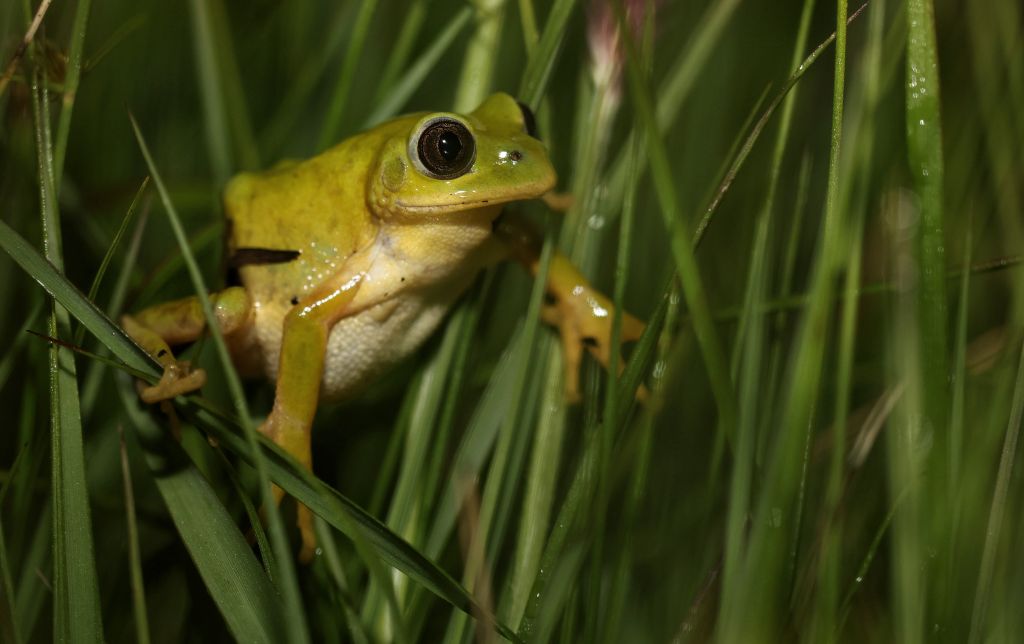
Learning to listen: using the Long-toed Tree Frog to tune into wetland health
The Long-toed Tree Frog (Leptopelis xenodactylus) and its distinctive breeding calls could help scientists gauge ecosystem health through in South Africa’s high elevated wetlands | Photo: Keir Lynch
In the misty highlands of KwaZulu-Natal, an elusive amphibian is helping scientists tune into the health of South Africa’s threatened wetlands. The Long-toed Tree Frog, found only in the KZN Midlands and southern Drakensberg, is the focus of a new conservation project that blends traditional fieldwork with cutting-edge technology — including call recordings, drone mapping, weather data, and wetland monitoring — to better understand and protect this endangered species.
The project, led by Jeanne Tarrant and a team of researchers with deep roots in the region, centres on a deceptively simple idea: learning to listen. By recording and analysing the chorus of calling males during breeding season, scientists can gauge the size and health of local frog populations — and, by extension, the condition of the wetlands they depend on. These high-elevation grasslands are under growing pressure from agriculture and exotic plantations, making effective habitat management essential not just for the frog’s survival, but also for the sustainability of surrounding land use and water systems.
Beyond its scientific goals, the project also engages directly with local landowners to assess their attitudes towards conservation over time and their willingness to enter into formal habitat protection agreements. This social component helps researchers understand what drives cooperation — and where conservation interventions are most likely to succeed.
The research has already begun to shape on-the-ground conservation actions, such as wetland rehabilitation and alien plant removal. It builds on recent Red List assessments of South Africa’s amphibians, using new data to test which management approaches are most effective in reversing population declines. The findings will feed directly into future Red List updates, helping refine national and global conservation priorities.
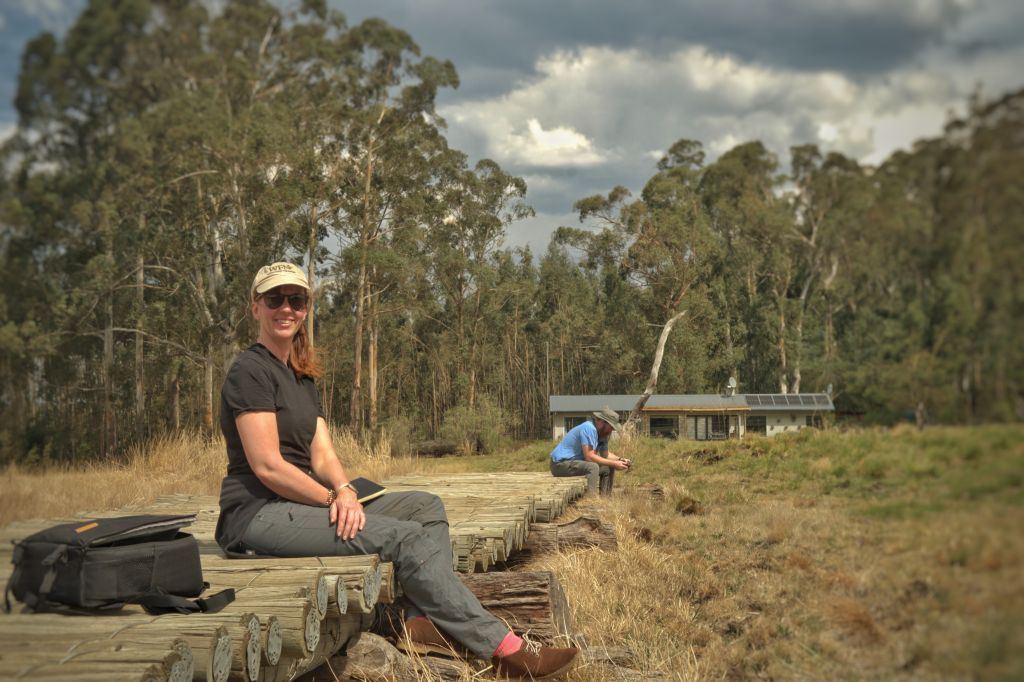
For Tarrant, the project is also deeply personal. “The long-toed tree frog was first described in Underberg, my hometown,” she explains. “It’s the species on our logo — a reminder that while our work starts locally, it connects to the bigger picture of amphibian conservation across Africa.”
Ultimately, “learning to listen” is about more than frogs. It’s about tuning into the subtle signals of an ecosystem — and acting before the chorus falls silent.
The kitchen innovator: fortifying bread with insects
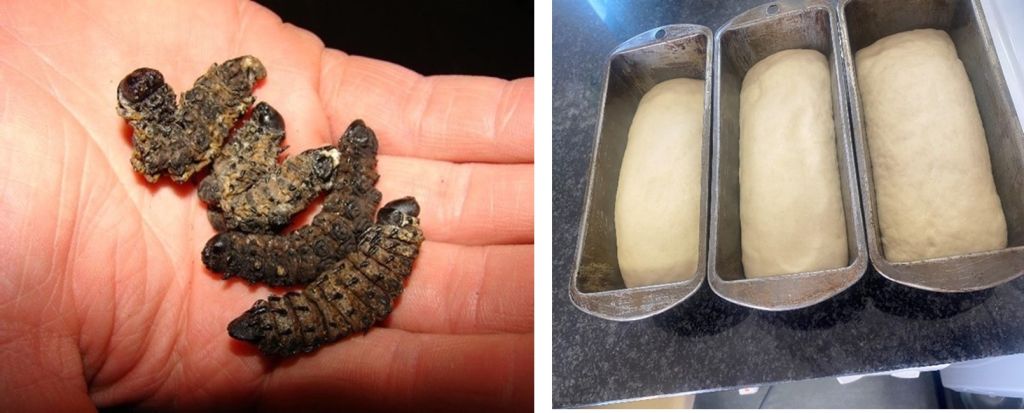
In a groundbreaking research approach to tackling malnutrition, food scientists Nkanyezi Radebe, Zabentungwa Hlogwane, Caswell Munyai, and Muthulisi Siwela are exploring how a humble loaf of bread could help combat nutrient deficiencies across Africa. Their poster, Improving the nutritional composition of bread through supplementation with edible insects, presents compelling evidence that adding insect meal to bread can significantly boost its protein and mineral content — without changing its familiar taste or texture.
For millions of people in sub-Saharan Africa, bread is a daily staple. Yet, in its unfortified form, it lacks key nutrients such as protein, iron, and zinc — deficiencies that contribute to widespread malnutrition, especially among low-income communities. At the same time, edible insects are abundant, affordable, and packed with nutrients — but often avoided due to cultural stigma or aversion to eating whole insects. Radebe’s research tackles both problems by using finely milled insect meal to enrich bread, making the nutrient boost invisible while retaining full nutritional benefit.
The study tested different types and concentrations of insect meal in both white and brown bread. The results were striking: higher insect concentrations consistently improved protein, iron, and zinc levels in all samples. This means that simply incorporating insect meal into a common food could provide a sustainable, culturally acceptable strategy for reducing nutrient deficiencies.
Beyond improving diets, the approach carries significant environmental benefits. Insects require far less land, water, and feed than traditional livestock, making them a climate-friendly protein source well-suited to the challenges of a warming world.
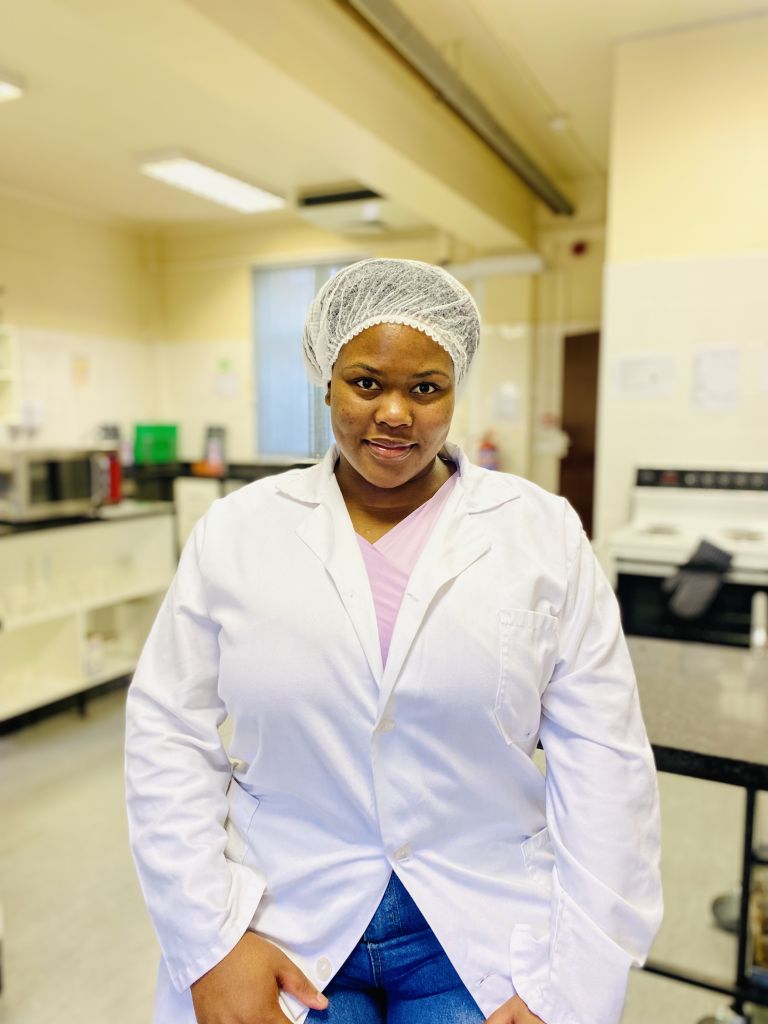
Radebe’s motivation is deeply personal. “Growing up in a rural community, I saw how poverty led to nutrient-deficient diets,” she says. “Insects used to be part of traditional diets, but we lost that knowledge over time. This project is about finding a practical, sustainable way to bring that back — improving nutrition without forcing people to change what they eat.”
If accepted and scaled, insect-fortified bread could become a simple, powerful tool for addressing malnutrition — one loaf at a time.
The artist's lens: communicating extinction through a pangolin
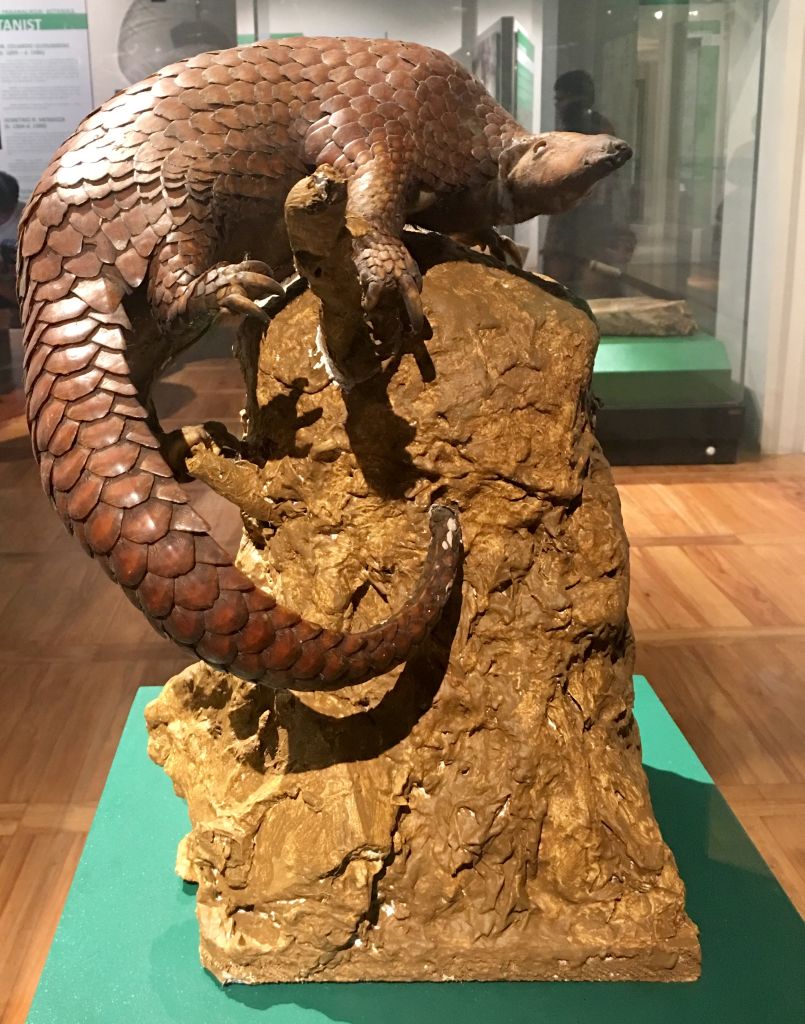
Taxidermied Pangolin displayed at Philippine National Museum Julan Shirwood Nueva | Wikimedia Commons
Imagine a pangolin on display — not alive, not preserved, but a human-made replica, standing in for a species that may soon survive only as memory or in museums.
This is the world artist and curator Fritha Langerman explores in her poster presentation, Extinction in translation: Replication, fragmentation and absence as strategies of visual display.
“At the heart of my work is the pangolin,” Langerman explains. “This project explores species loss through the lens of art and visual culture, using absence, fragmentation, and replication to communicate extinction.” Her internationally travelled exhibition FREIGHTED first focused on rhinos and now turns to pangolins, tracing centuries of animal collection and display. From 16th-century trade routes to 19th-century natural history expeditions, countless African animals were removed and sent to European museums and zoos. Langerman reconstructs this history not with original specimens, but with carefully crafted models, fragments, and installations. “By constructing these exhibitions as simulations — containing no original images or artefacts — attention is directed toward a future in which these endangered species may persist only as reproductions and absences,” she says.
Her work takes inspiration from Albrecht Dürer’s 1515 print of the Indian rhinoceros, labelled abconderfet — “an accurate copy of an absent original.” Langerman, trained as a printmaker, notes that this idea “resonates with how I understand my exhibitions and their relationship to natural history collections.” By presenting animals as simulations, she asks audiences to imagine a future where endangered species survive only as representations, while drawing attention to how centuries of colonial collecting continue to shape biodiversity today.
Exhibited in museums and zoos — spaces often frequented by young audiences — the installations combine striking visuals with historical narrative. “These are sites that are largely frequented by younger audiences, and within these contexts the works offer a historical and critical lens to interpret the history of collection and display,” Langerman emphasizes. The return of FREIGHTED to South Africa’s Ditsong Museum is a symbolic repatriation, highlighting both the cultural importance of wildlife and the ongoing challenges faced by underfunded national museums.
Ultimately, Langerman transforms absence into presence. Her poster and exhibitions ask viewers to see, imagine, and remember species at risk, turning the story of extinction into something tangible, immediate, and emotionally resonant.
Africa’s ecology and the making of humans
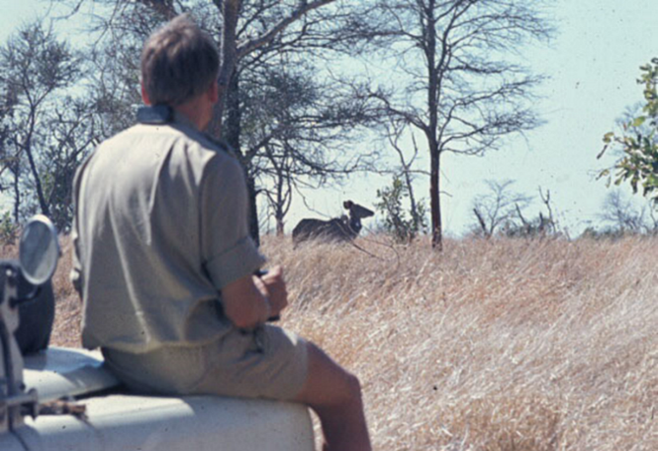
Norman Owen-Smith traces Africa’s open savannas as the evolutionary classroom that shaped early humans. Photo | Supplied
What made humans the most feared predator in Africa? According to ecologist Norman Owen-Smith, it wasn’t just luck or chance — it was the land itself. In his poster, How distinctive features of Africa’s ecology nurtured human origins, Owen-Smith shows that Africa’s geology, climate, and abundant wildlife created the perfect “training ground” for our ancestors.
“The distinctive features of Africa’s ecology are ultimately derived from basement geology and continental movements,” Owen-Smith explains. “They govern seasonal dryness, local soil fertility and the prevalence of grassy savannas.” These high-lying interiors, with wet and dry seasons, shaped sprawling savannas rich in medium- and large-sized grazing animals. For early humans, these landscapes offered a reliable source of energy: meat and bone marrow from herbivores that could digest tough, dry grasses.
This combination of open terrain and abundant prey pushed humans through key evolutionary transitions. Our ancestors went from fruit-eating forest dwellers to savanna-hunting meat-eaters, developing intelligence, cooperation, and tools along the way. “The crucial feature of Africa’s ecology,” Owen-Smith notes, “was the abundance and diversity of medium-large grazing herbivores. This enabled our pre-human ancestors to fall back on meat and bone marrow initially scavenged from carcasses, and later to actively hunt these animals.”
Owen-Smith connects this deep evolutionary past to modern conservation challenges. Africa’s large mammals are a global heritage that draw tourists from around the world, but to survive, they need space to cope with seasonal variation. Effective conservation depends on local communities benefiting from these protected areas, giving people a stake in preserving the landscapes that shaped both wildlife and humanity.
“I had been fascinated by wild animals from my school-boy days,” he says. “Visiting Kruger Park with my family, I longed to explore the places where these animals lived. I was drawn into studying ecology by the challenge of making it a reliably predictive science, far more difficult than physics and chemistry in its complexity.”
Owen-Smith’s poster invites audiences to see Africa not just as a continent, but as an evolutionary classroom — where geology, climate, and ecology combined to nurture humans into the planet’s ultimate predator, and where conserving that legacy today matters for both wildlife and people.
Ecological detectives: high-tech tracking using footprints
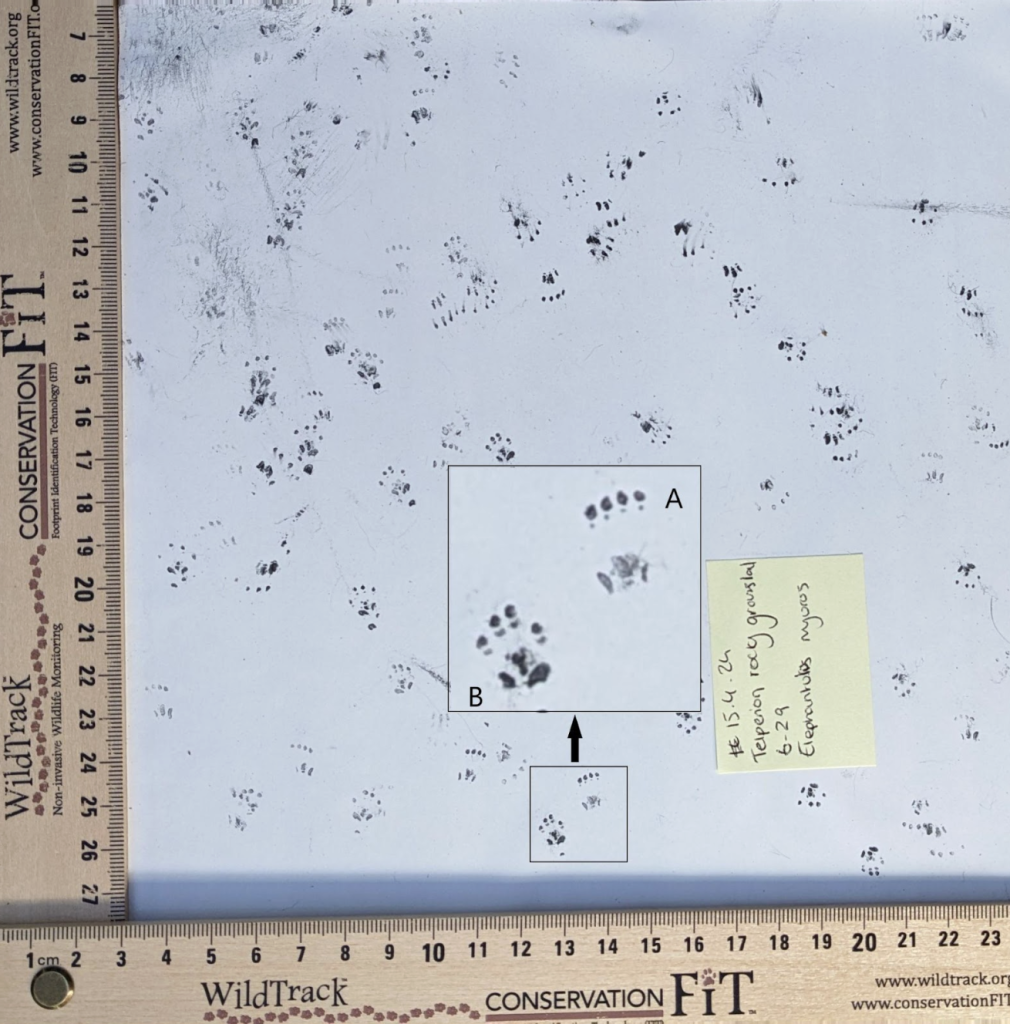
Captured spoor of a small mammal, measured for analysis using Footprint Identification Technology (FIT), which distinguishes species and individuals from their unique footprints. Photo: Supplied
In a world where biodiversity is rapidly declining, scientists are turning to one of nature’s simplest traces — footprints — to uncover vital clues about ecosystem health. The project Paws for Thought: Using Footprint Identification Technology (FIT) to assess ecological integrity through the lens of small mammals showcases a powerful new way to monitor wildlife without ever capturing or disturbing it. Led by Dr Zoe Jewell & Dr Sky Alibhai, with expert small mammalogists Dr Nico Avenant and Dr Maria Oosthuizen, the team demonstrates how cutting-edge technology, combined with traditional tracking knowledge, can reveal remarkable insights about even the smallest species.
The study focuses on a key indicator group, the small mammals, including sengis, also known as elephant shrews — tiny insect-eating mammals that are notoriously hard to tell apart. Using Footprint Identification Technology (FIT), the researchers were able to distinguish between two almost identical sengi species based solely on their tracks. Each print holds a wealth of information: species, individual identity, sex, and even age. What makes FIT especially exciting is that it’s non-invasive, low-cost, and accessible, using locally available materials and methods inspired by indigenous tracking expertise.
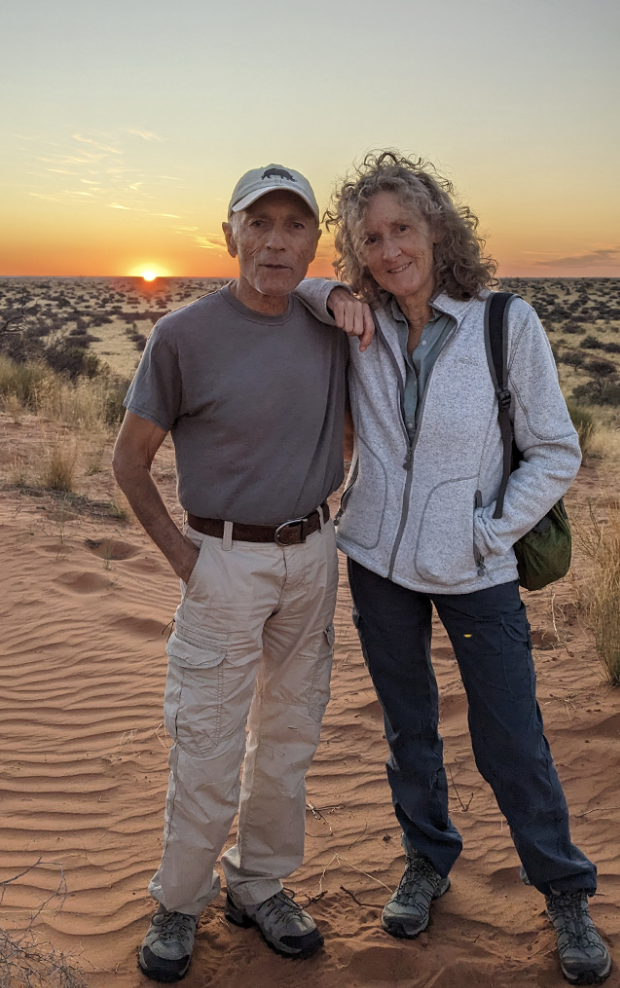
At its core, the research addresses a global problem: ecosystems are deteriorating, but conventional monitoring methods are often too expensive, technical, or disruptive to deploy widely. By providing an early-warning tool that communities themselves can use, FIT offers a way to detect subtle shifts in biodiversity and ecological function before damage becomes irreversible.
The implications stretch far beyond academia. FIT is already empowering local trackers, park rangers, and conservationists across Africa — and beyond — to monitor wildlife populations in real time, combining indigenous knowledge with modern data analysis to protect the environments they depend on.
For Jewell, the inspiration was both scientific and personal. We wanted to do conservation from the ground up in the literal and metaphorical sense” she explains. “Small mammals are vital to ecosystem balance, yet so easily overlooked. Figuring out how to read their stories from something as delicate as a footprint was thrilling — and it opened up an entirely new way to listen to nature.”
In essence, FIT turns the ground under our feet into a data archive — where every footprint tells a story of life, survival, and ecological change.
The unlikely sentinel: mole-rats and global pollution
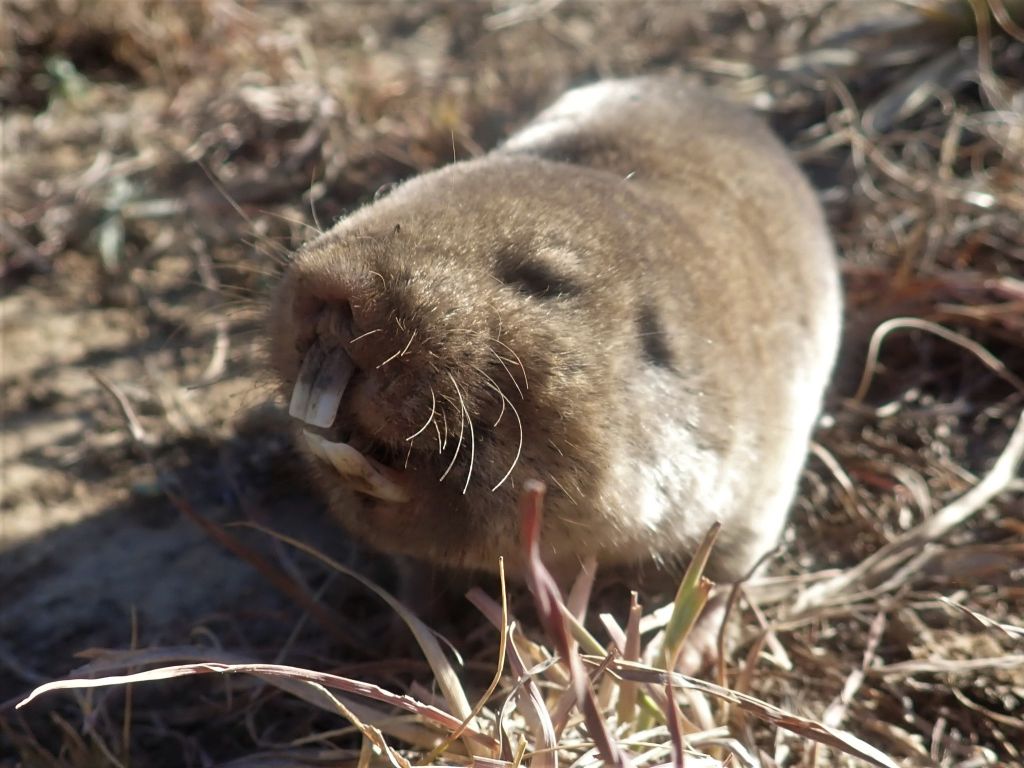
The highveld mole-rat (Cryptomys hottentotus pretoriae) could help scientists trace the hidden pathways of environmental pollution. Photo: Jimmy Whatmore | Wikimedia Commons.
Beneath the soil of South Africa’s Highveld, mole-rats dig their tunnels, oblivious to the world above — yet these subterranean creatures may hold critical clues about environmental pollution. Erin Brooke’s poster, Highveld mole-rats as sentinels for environmental health monitoring, uses these animals as biological indicators, showing how pollutants like microplastics and phthalates move from the environment into wildlife.
“My poster demonstrates how environmental pollutants, namely microplastics and phthalates, are being transferred to even the most unsuspecting of wildlife,” Brooke explains. “By quantifying the levels of exposure to these contaminants that these animals are facing, my research aims to lay the foundation to filling this knowledge gap using the Highveld mole-rat as a model animal.”
Microplastics and the chemicals released by plastics are now found everywhere on the planet, but terrestrial wildlife — especially species that live underground — have largely been overlooked. Brooke’s research addresses this gap, showing that subterranean animals are regularly exposed to these contaminants. “This exposure and the subsequent accumulation of these contaminants in the body of these animals has major implications for the potentially devastating physiological effects these contaminants may pose on Highveld mole-rats, as well as other wildlife.”
The implications extend far beyond the mole-rats themselves. If soil-dwelling organisms are affected by pollution, soil fertility and crop quality could also be compromised, with consequences for food security. Brooke adds that her findings could help guide waste management policies, providing evidence to support stricter regulations on plastic disposal and other anthropogenic pollutants.
Her motivation is deeply personal: “I was inspired after seeing the increase in media reporting on the occurrence and effects of microplastic exposure on human health. I discovered that very little research is done on animal exposure and health, let alone in terrestrial animals. This severe knowledge gap inspired me to take on this project so that I might help provide the missing knowledge.”
Brooke’s poster turns the Highveld mole-rat into an environmental sentinel, using a small, hidden species to reveal the larger, pervasive threats of pollution — and offering insights that could protect both ecosystems and human health.
This snapshot overview of key poster presentations at the 14th Oppenheimer Research Conference was produced with support from Jive Media Africa, science communication partner to Oppenheimer Generations Research and Conservation (OGRC).
Author
- Putting people at the heart of conservation - October 16, 2025
- Tracking the hidden journey of eels: Why collaboration across the Indian Ocean matters - October 16, 2025
- From barriers to breakthroughs: Africa’s scientific journey - October 16, 2025
